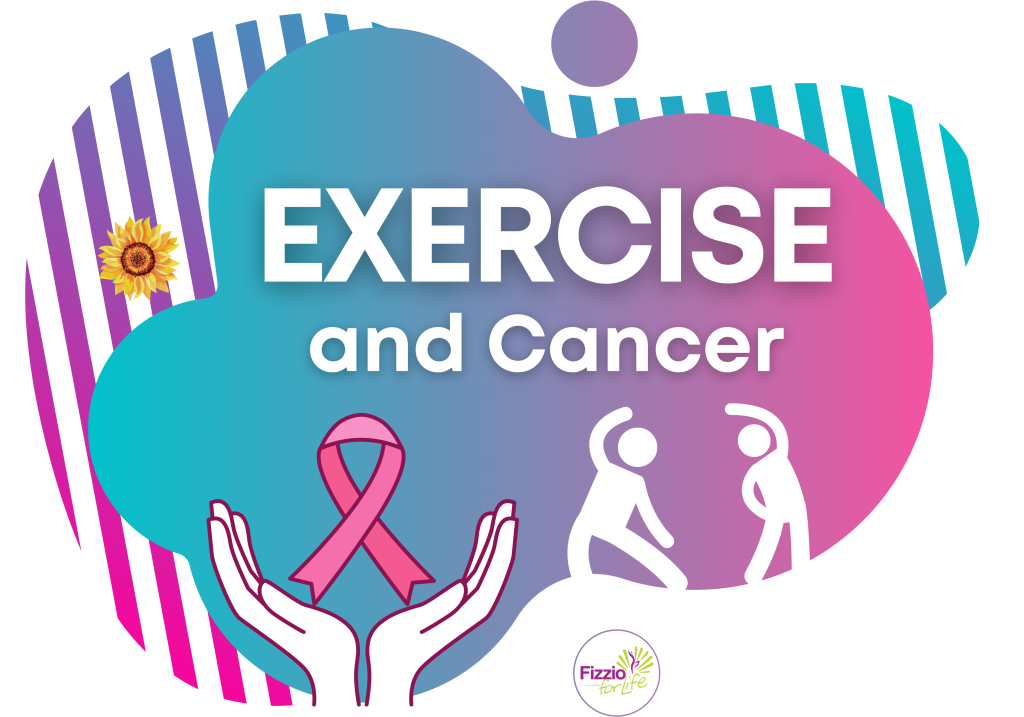
Although exercise may be the last thing you feel like doing whilst undergoing cancer treatment, it may just be your secret weapon!
Research shows exercising throughout cancer treatment is one of the best things you can do. Exercise is a safe and effective way to counteract the negative physical and emotional effects of cancer, help increase energy levels, minimise side effects and even improve treatment outcomes.
Studies confirm that people with cancer who are physically active have significantly less fatigue, reduced psychological distress, better physical function and improved quality of life than those who don’t exercise (1).
don’t exercise (1).
Even if you have never exercised before, an exercise regime tailored to your needs and goals can get you moving safely and improve your overall wellbeing.
SO WHAT ARE THE BENEFITS?
Many research studies support that exercising during cancer treatment helps you feel better and makes everyday activities easier to undertake.
Fatigue is a very common side effect of cancer and exercise has been found to conclusively reduce cancer-related fatigue (2). Fatigue severity can fluctuate from day to day and therefore activity levels may need to be adjusted depending on how you’re feeling. It’s important, even during times of excessive fatigue, to perform some kind of low intensity exercise to prevent losing fitness and strength, which can make fatigue worse in the long term.
However fatigue isn’t the only side effect that can be improved through exercise. Other benefits include:
- Reduced risk of other physical side effects such as peripheral neuropathy, lymphedema, osteoporosis and nausea
- Prevents muscle loss and builds strength
- Assists in weight management
- Improves anaemia (a red blood cell deficiency)
- Improves appearance and self esteem
- Improves mobility and balance to reduce falls risk
- Reduces risk of anxiety and depression
- Enhances quality of life
- Reduces risk of other chronic diseases such as heart disease and diabetes
- Lowers risk of cancer recurrence
A study showed patients who exercise regularly have a 21-35% lower relative risk of cancer recurrence, a 28-44% reduced relative risk of cancer specific mortality, and a 25-48% decreased relative risk of all-cause mortality when compared to patients who do little to no exercise (3).
All these health benefits sound good, right? So here’s how to get started.
WHAT TYPE OF EXERCISE AND HOW MUCH?
The physical activity guidelines for healthy adults recommend at least 150 minutes of moderate-intensity aerobic exercise a week and muscle strengthening activities 2 days a week.
However, cancer is a highly complex disease and affects each individual differently, thus a ‘one size fits all’ for exercise in cancer will never be appropriate. Your exercise prescription will depend on the type of cancer, current treatments, side effects, level of fitness and other health conditions or medical concerns.
Exercise medicine in cancer management position statement states there is no set exercise prescription that would be seen as evidence based for all cancer patients. However, they recommend:
- avoid inactivity and be as physically active as your current condition allows
- take part in regular physical activity, slowly progressing towards 150 minutes of aerobic activity weekly and 2 strength sessions a week if appropriate.
- aim to complete at least moderate intensity exercise, unless certain risk factors are present.
- perform exercise tailored to your individual abilities and health status
These risk factors can include (not limited to):
- recent surgery for cancer
- lymphedema
- nausea related to higher intensity activity
- radiation therapy burns
- compromised immune function
- anaemia
- low platelet count
Even if someone has any of the above factors, exercise is still possible, however it’s best to seek guidance from an exercise specialist, to minimise any risks and maximise the benefits. This is where an Accredited Exercise Physiologist with experience in cancer would be best placed to work with someone living with cancer.
WHAT SHOULD BE IN YOUR EXERCISE PROGRAM?
A mix of aerobic and resistance based exercise should be included in your exercise program, and each session adjusted based on how you are feeling that day.
Aerobic exercise: Aerobic exercise, also known as cardio, is any activity that increases your heart rate and includes things like walking, swimming and dancing, which helps strengthen your heart and lungs. If 20 minutes or more of continuous aerobic exercise can be reached, it is recommended to aim for exercise on most days of the week, avoiding two consecutive days with no planned exercise. If 20 minutes is too challenging, it is recommended to break it up into multiple bouts of exercise (<20 minutes) and still aim to do this every day.
Resistance exercise: Strength training helps you maintain and build stronger muscles, which assists in preventing falls, reducing fatigue and makes daily activities more manageable. Strength training includes bodyweight exercises (squats, push ups), or using dumbbells, resistance bands and machine weight exercises. You should aim to do this at least twice per week, with usually 48 hours of recovery before exercising the same muscle group again.
HOW TO EXERCISE SAFELY
Here are some tips to ensure you get the most out of your exercise program safely:
- Progress slowly: Start at a level of exercise you can do comfortably and slowly progress to help prevent injury, fatigue or burnout. Even if you can only be active for a few minutes a day, this is a good start!
- Exercise in a safe environment: If you have a weakened immune system due to treatment, avoid large gyms where germs spread easily. Avoid any exercise that puts you at risk of falls or injury.
- Listen to your body: If your energy levels are low, or you have a symptom flare up, reduce the duration or intensity of exercise until you feel better.
- Eat a nutritious diet & stay hydrated: Drink plenty of water (unless you have been told not to) and eat the right foods to avoid dehydration and to fuel your body correctly. The correct foods, especially those high in protein, can help your body recover after exercise.
- See your doctor regularly: Throughout treatment your health may change. To ensure you are safe to exercise, check in with your doctor regularly and make sure they check for important health indicators such as your blood count.
- Keep it safe, keep it fun, and make it work for you!
WHY AN EXERCISE PHYSIOLOGIST?
Exercise Physiologists are uniquely placed through a 4 year university degree to provide safe and effective exercise interventions for people with cancer, and other chronic illnesses. They are experts in applying the latest available evidence, whilst using clinical judgement and expertise to incorporate your individual health needs, goals and preferences into an individually tailored exercise program to ensure you receive the best care possible.
If you want to learn more about how exercise can help you with your cancer journey, don’t hesitate to contact us to arrange an appointment.
More information about specific types of cancer and exercise can be found here on the Exercise and Cancer ESSA ebook. https://exerciseright.com.au//home/fizzioforlife/public_html/wp-content/uploads/2019/10/Cancer-eBook_2019_FINAL2510.pdf
- Better Health Channel. (2021). Cancer- exercise to help you cope. Victoria State Government. Retrieved from https://www.betterhealth.vic.gov.au/health/conditionsandtreatments/cancer-exercise-to-help-you-cope
- Exercise Right. (2019). How exercise can help you recover from cancer. ESSA. Retrieved from https://exerciseright.com.au/how-exercise-can-help-you-recover-from-cancer/#:~:text=Exercise%20has%20been%20found%20to,cancer%20treatment%2Drelated%20side%20effects.
- Cormie P, Zopf EM, Zhang X, Schmitz KH. (2017). The impact of exercise on cancer mortality, recurrence, and treatment-related adverse effects. Epidemiol Rev. 39(1):71–92. doi: 10.1093/epirev/mxx007

